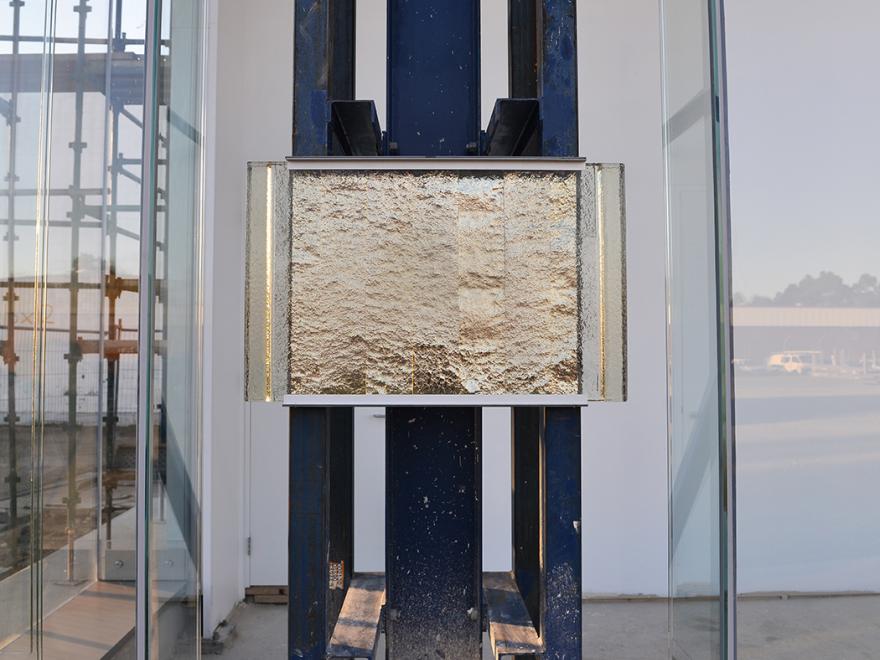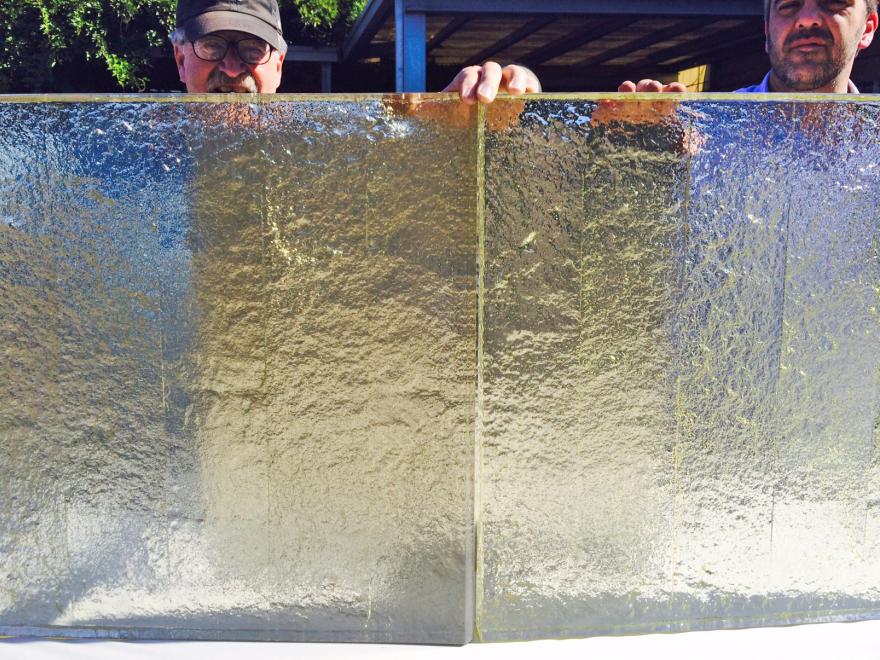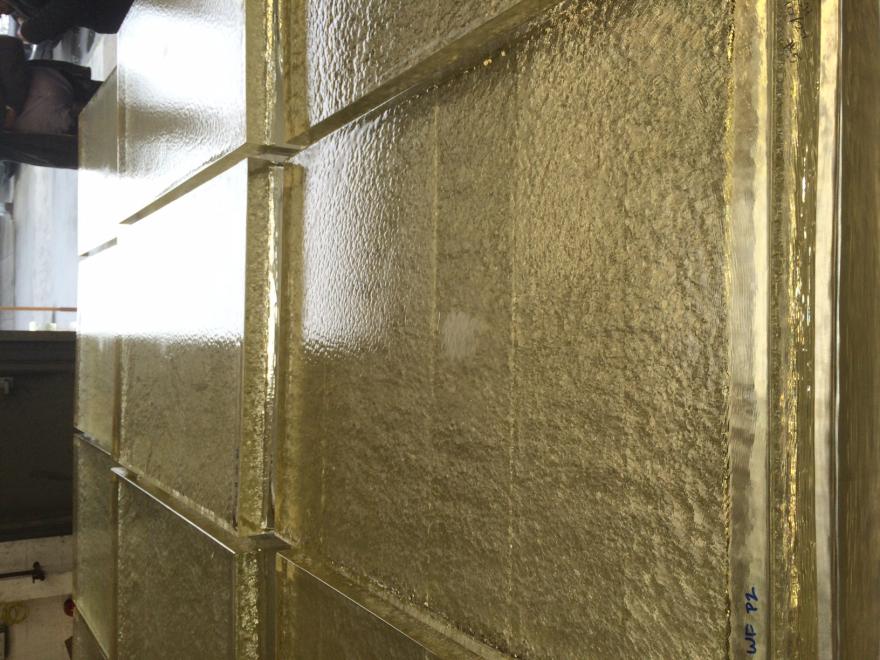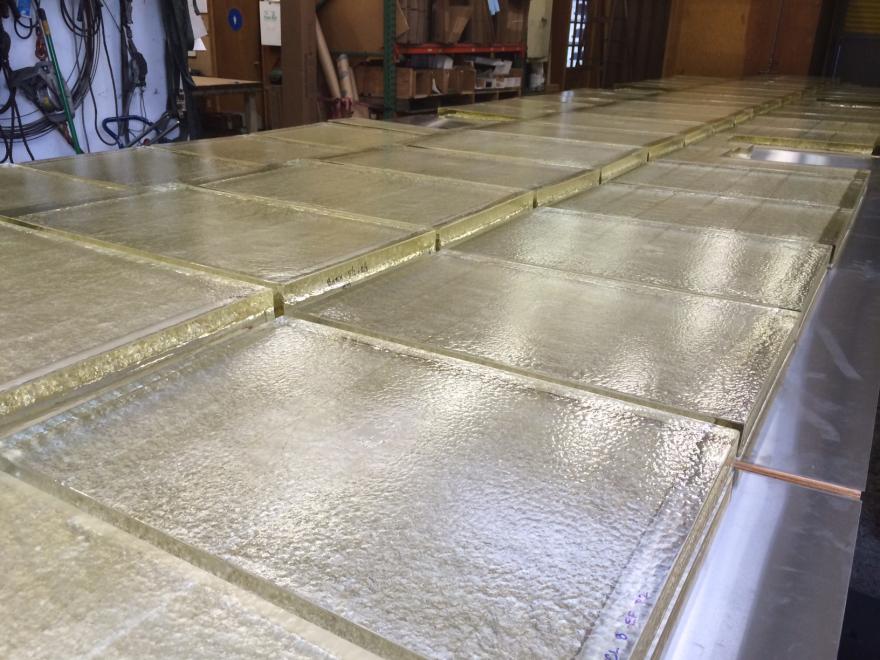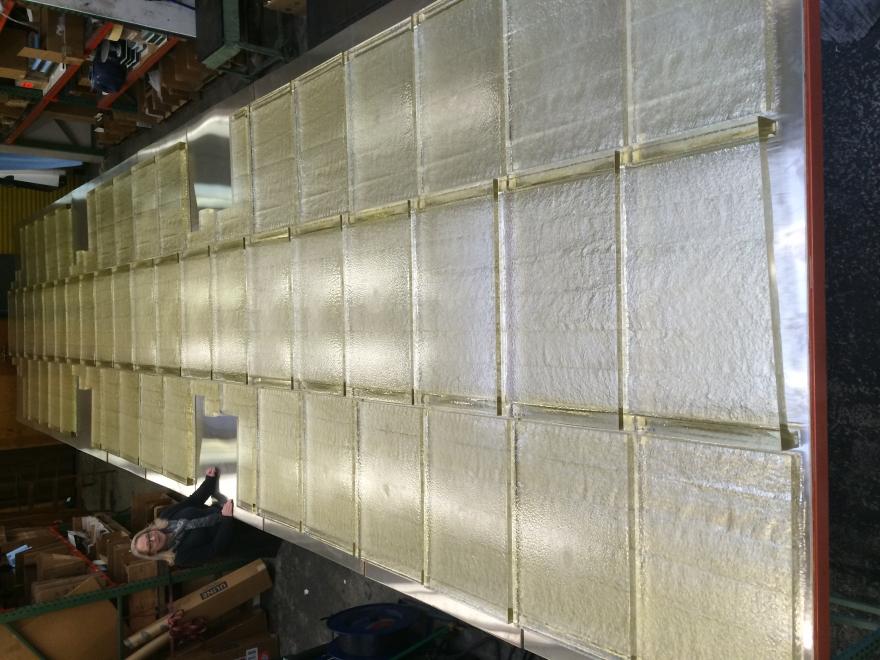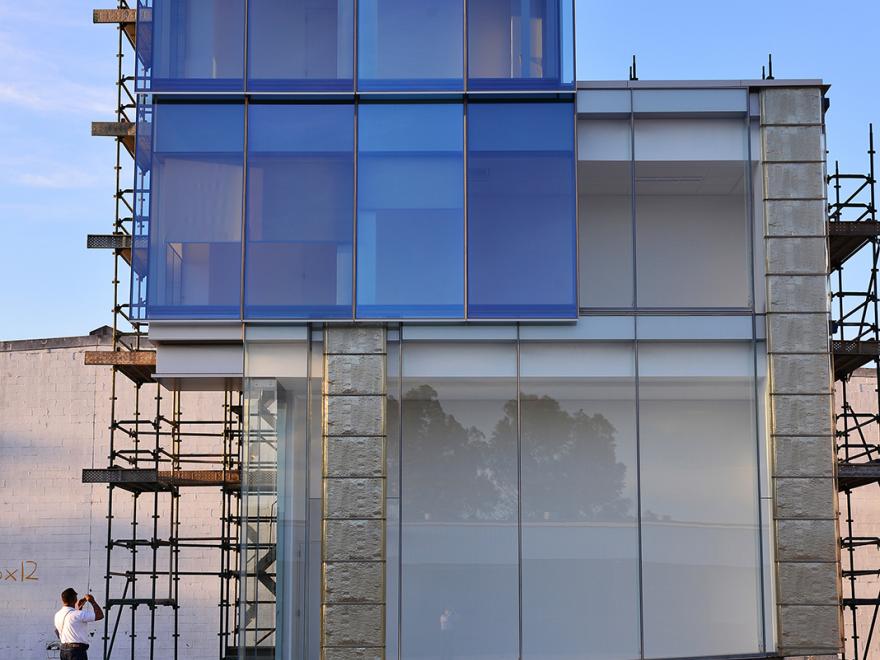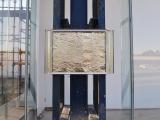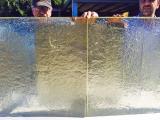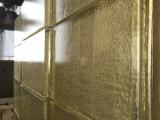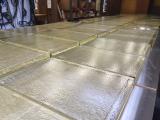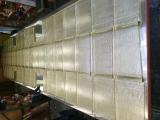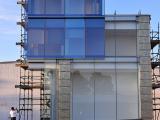The 20 Martin Place Project consisted of a complex refurbishment of an existing 1970s commercial tower. Incorporated into this project was the use of cast-glass panels to the lower podium columns. This required the innovative development of cast glass, often referred to as slumped glass, which is generally only used in artistic and sculptural applications. An art studio familiar in cast glass was engaged to see if it could be ‘industrialised’ to ensure compliance with Australian Standards, building tolerances and consistency of colour and finish. The glass was developed in the USA in conjunction with an artistic glass studio which had experience casting glass into carved graphite moulds. The key was to develop the artistic product into a useable and repeatable material to clad the existing façade columns. The idea was to achieve a colour and texture sympathetic to the adjacent buildings in Martin Place while displaying a high-tech characteristic reflecting the upgraded building. Issues requiring resolution included the final finish, colour and backing. Backing options ranged from sandblasted stainless steel to mirror-polished stainless steel. The latter was decided on as this gave the best impact behind the glass. The structural properties of the glass required testing which included impact, crush and flexural testing of the glass in Melbourne to create a starting point for the engineering. Following the testing, the optimum thickness for the glass was 50mm to allow it to be successfully fixed to the façade and comply with the relevant Australian codes and Standards. Fixing methods also had to be designed to reflect the specific requirements of glass. In order to achieve repeatability in manufacture and structural, visual dimensions, Built facilitated the retooling of the glass studios in the USA with a new furnace, equipment and racking facilities to enable the daily quota of panels to meet the program. Samples of each batch had to be shipped to a glass testing facility in Los Angeles and tested for impact and flexural strength to establish compliance with the parameters set in the Melbourne testing. Significant investment in time, money and engineering was required to get this product to the point where all the requirements from aesthetics to compliance, consistency and engineering were achieved.
Category
Construction (Commercial) » Innovation - New Product
Price
OPEN PRICE CATEGORY
Year
2016
Company
Built
Project
20 Martin Place
Suburb
Sydney
Prize
Winner


